In last month’s instalment, our Harlot was arrested in her miserable bawdy-house.
This month we find her in prison doing forced labour.
So why, you may ask, is she dressed so finely? This sudden change of costume confused many commentators over the centuries.

Figure 1 – A Harlot’s Progress Scene 4
IMAGE CREDIT: A Harlot’s Progress (1731) by William Hogarth – Attribution 4.0 International (CC BY 4.0)
We now know that Hogarth loaded every scene of this series with Masonic symbolism. This awkward costume change allowed Hogarth to conceal an important part of the ritual.
As the jailer’s wife strips the Harlot of her fine clothes, the maid gets given a new pair of shoes and stockings.
As the maid puts these on, she bares her knees. This was the Masonic element that Hogarth wanted to feature.

Figure 2 – The maid bares her leg as a hiram looks up her skirt
IMAGE CREDIT: A Harlot’s Progress (1731) by William Hogarth – Attribution 4.0 International (CC BY 4.0)
To reinforce the Masonic element, Hogarth has positioned two mallets in an unlikely position of a square (lower right corner). These working tools are called ‘hirams’ (after a Masonic character) and are used as a prop in the lodge. One of the ‘hirams’ is almost looking up the woman’s skirts.

Figure 3 – Examples of gavels and mallets from Lodge rooms
IMAGE CREDIT: A Harlot’s Progress (1731) by William Hogarth – Attribution 4.0 International (CC BY 4.0)
Aside – Today’s gavel is a miniaturized form of this larger wooden hammer. Some lodges still have these huge ‘hirams’ along with their working tools.
Here are some examples of gavels and mallets, some crossed on Masonic jewels.
The oversized ‘hiram’ on the far right is from a Masonic retailer, and is exactly what we see the Harlot using in the print.
The other woman picks lice from her bared bosom. The baring of a candidate’s chest and leg is described in Duncan’s Ritual (1866).
When you compare this text to the details in the print, you see that Hogarth was illustrating this part of the ritual in his painting.
The text of the Fourth Degree uses the words ‘Work’ 26 times, and ‘Wages’ 16 times. These words are present in the print. They are written on the wall as warnings to the inmates –
“Better to Work than Stand thus” and “The Wages of Idleness”. Again, Hogarth finds clever ways to illustrate the wording from the Ritual books.

Figure 4 – The words ‘Work’ and ‘Wages’ from the ritual are found in the print
IMAGE CREDIT: A Harlot’s Progress (1731) by William Hogarth – Attribution 4.0 International (CC BY 4.0)
The diagram in Duncan’s Ritual shows a man with his hand through a curious contraption (not shown). Other men seem to grab the candidate’s hand and pretend to chop it off.
Many exposes explain that this is a symbolic representation of how wages were paid for work done in biblical times.
Hogarth shows a man with hands in stocks behind the jailer. I include a photograph of a similar masonic form of stocks that are for sale from a Masonic supply website. The axe is sold separately.

Figure 5 – Stocks and axe for sale from a Masonic online retailer
IMAGE CREDIT: A Harlot’s Progress (1731) by William Hogarth – Attribution 4.0 International (CC BY 4.0)
Hogarth cleverly recreated an axe in the scene by using a false perspective (trompe l’oeil).
Notice how the Harlot’s mallet combines with the tricorn hat on the wall behind her. It produces the appearance of an axehead.
Observe the roll of hemp. It looks exactly like an arm, with curled fingers. Indeed, you will never look at that detail again without seeing a severed limb!

Figure 6 – Axe and severed arm. – Jailer and man behind him in the stocks
IMAGE CREDIT: A Harlot’s Progress (1731) by William Hogarth – Attribution 4.0 International (CC BY 4.0)
Hogarth hints at the actual ‘hand chop’ by making the jailer hold his cane as if slicing off his own hand. Notice he is standing with his feet at a square, wearing a white apron.
He is pointing down at the hemp which all the prisoners are busy beating with heavy wooden mallets. This forced labour was common in prisons.
The hemp could then be made into rope, some of which was used by the hangman! (Prisoners still make hangman’s rope in Indian prisons – a horrific remnant of British colonialism!)
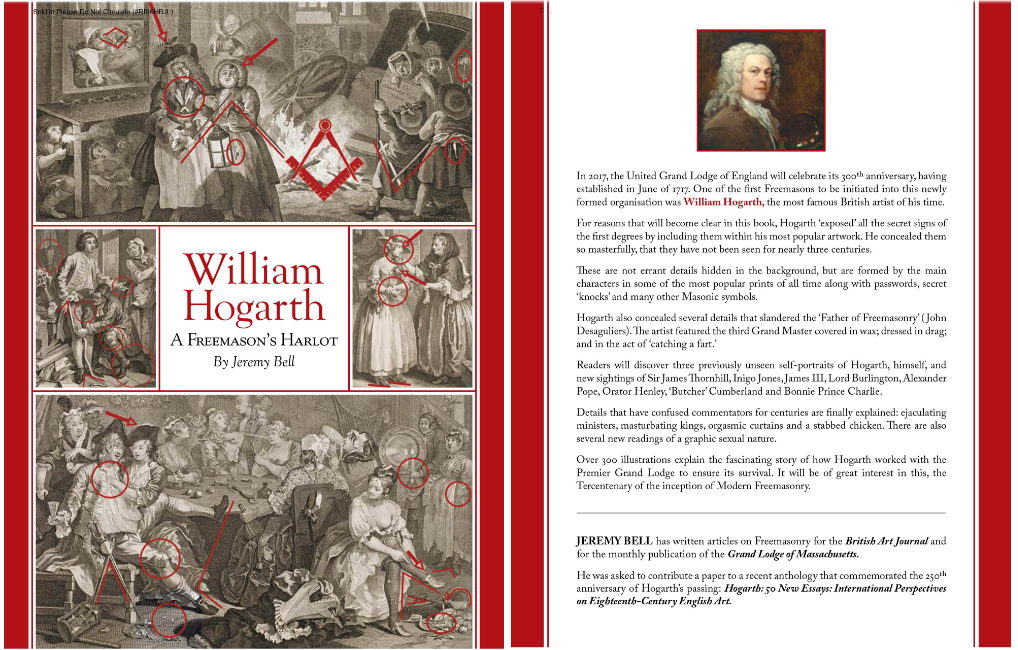
Figure 7 – Much more in my book William Hogarth – A Freemason’s Harlot available from my website.
IMAGE CREDIT: A Harlot’s Progress (1731) by William Hogarth – Attribution 4.0 International (CC BY 4.0)
There are many more Masonic details within this print. I can explain how the ‘hangman’ graffiti on the back wall fits into the ritual, as well as how the basket of hemp resembles a pillar at King Solomon’s Temple. Even the jailor’s hat links into the intrigue.
Many more details from the other scenes are explained in my book William Hogarth – A Freemason’s Harlot which is available from my website www.brotherhogarth.com.
Email me at Brotherhogarth@gmail.com. I can show you how many of Hogarth’s other works were Masonically themed.
However, before we get into that, we have two more scenes that tell the Harlot’s story. Buckle up – it’s all downhill from here!
What part of the Third Degree Ritual is being portrayed in the penultimate Scene?

Figure 8 – A Harlot’s Progress Scene 5
IMAGE CREDIT: A Harlot’s Progress (1731) by William Hogarth – Attribution 4.0 International (CC BY 4.0)
Clue – The 5th Scene in series shows the part of the ritual that is based upon the number Five.
Artist: William Hogarth (1697-1764)
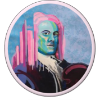
William Hogarth was made a Mason at the Hand and Apple Tree Lodge in Little Queen Street, Holborn, London c1725-28.
He later joined the Bear and Harrow in Butcher Row, known later as the ‘Corner Stone’ Lodge 4, and then Grand Steward’s Lodge. He designed a jewel known as ‘Hogarth’s Jewel’, it remained in continual use into the nineteenth century.
Hogarth was a prolific English painter whose scenes often demonstrated a satirical depiction of 18th century life.
He was responsible for the Copyright Act passed by Parliament in 1735 also known as the Hogarth Act.
Artwork: Tim Fowler

Many more details from the other scenes are explained in my book William Hogarth - A Freemason’s Harlot which is available from my website www.brotherhogarth.com.
Email me at Brotherhogarth@gmail.com. I can show you how many of Hogarth’s other works were Masonically themed.
Recent Articles: by Brother Hogarth
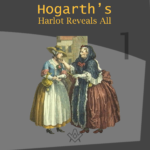 Hogarth’s Harlot Reveals All - Part 1 A new series looking at the hidden Masonic symbolism within Brother Hogarth's works - what can you find? |
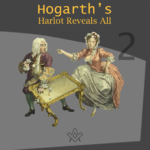 Hogarth’s Harlot Reveals All - Part 2 The second instalment in the series looking at the hidden Masonic symbolism within Brother Hogarth's works - what can you find? |
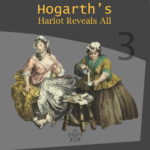 Hogarth’s Harlot Reveals All - Part 3 Brother Hogarth gives us another bawdy glimpse into the salacious world of the 'Harlot's Progress', and the tantalising Masonic symbolism hidden within! Can you spot the clues? |
 Hogarth’s Harlot Reveals All - Part 4 This month we find her in prison doing forced labour. So why, you may ask, is she dressed so finely? This sudden change of costume confused many commentators over the centuries. |
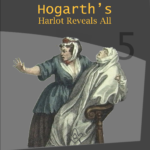 Hogarth’s Harlot Reveals All - Part 5 In last month’s instalment, our Harlot is found in prison doing forced labour. In this instalment the Harlot dies! |
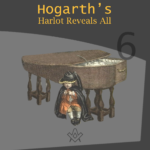 Hogarth’s Harlot Reveals All - Part 6 With our protagonist (the Harlot) lying in her casket, what next for the Widow's Son? |
 Hogarth's Harlot Reveals All - Part 6.2 A naughty clergyman, the virgin, and 'Father Time' - what can Hogarth reveal now?! |
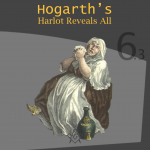 Hogarth's Harlot Reveals All - Part 6.3 Who are the famous men featured in the scene? Hogarth reveals all! |
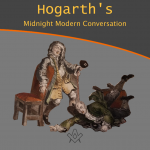 Hogarth's Midnight Modern Conversation Brother Hogarth is back with a look at another work of art with Masonic symbolism 'hidden in plain view' - what is occurring within the Midnight Modern Conversation? |
 Hogarth discreetly embeds more masonic signs and symbols in his paintings , never forgetting, everything he included in his scenes had meaning and is there for a reason. |
 Hogarth discreetly embeds more masonic signs and symbols in A Rake’s Progress, never forgetting, everything he included in his scenes had meaning and is there for a reason. |
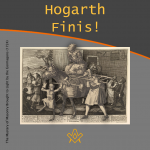 For twelve months Hogarth and his Harlot have revealed all, and the Rake has exposed himself. In this, the last part of the series (for now), we get a final glimpse at a few more of Hogarth's Masonic 'reveals'. |
masonic knowledge
to be a better citizen of the world
share the square with two brothers

click image to open email app on mobile device








